
Our walk begins at the Niujie Metro Stop (Line 19), in the heart of one of Beijing’s oldest remaining Hui Muslim communities.
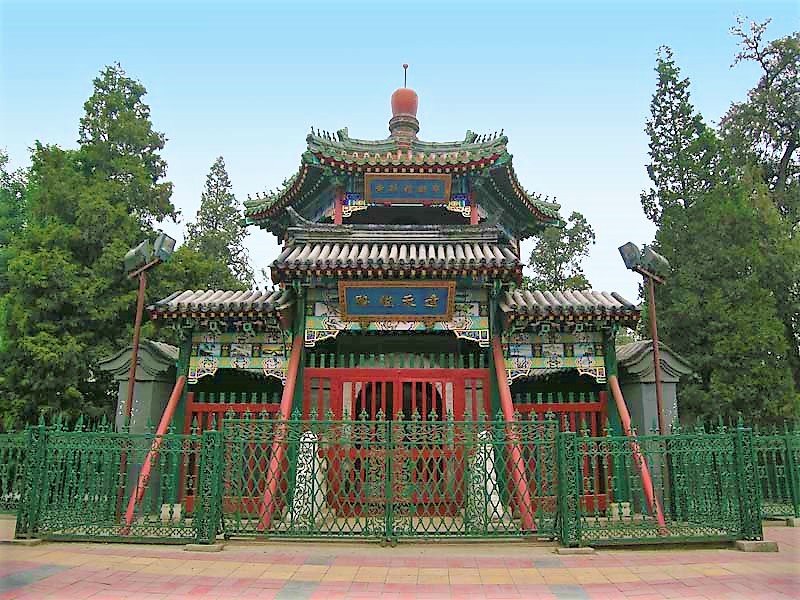
Urban renewal has changed the neighborhood over the past decade, but the area is still an excellent place to go for halal food and street snacks (a long-time Hui specialty). We particularly recommend the calorie bombs known as tanghuoshao 糖火烧 (sticky buns made with sesame paste and brown sugar) and the popular salty/sweet snack known as 牛舌饼 niushebing “Cow Tongue Cookies.” (Don’t worry, no cows are harmed in the production of the cookies). The Dashunzhai Bakery, on the ground floor of the Niujie Muslim Supermarket, is a great place to try these tasty snacks.

Walking west from the area around the Niujie Mosque, we come to another of Beijing’s most famous religious sites: Fayuan Temple. Fayuan Temple consists of Qing-era buildings that house statues and artifacts from even earlier dynasties set amidst courtyards filled with of equally venerable trees.

The original complex was built in the 7th century to commemorate soldiers and officers in the army of the Tang Empire killed during repeated attempts by the emperors to impose their will on the kingdoms of the Korean Peninsula (a popular hobby for past Chinese rulers) and the space has long been associated with martyrs. In 1289, former Song Dynasty official Xie Fangde died from a hunger strike after refusing to serve the new Mongol rulers of China. Fayuan Temple, whose present form is a product of the Ming and Qing Dynasties, was a setting for the 1991 novel Martyr’s Shrine a fictionalized account of a group of young scholars who tried (and failed) to implement sweeping constitutional reforms in 1898 and who used the temple as a meeting ground.
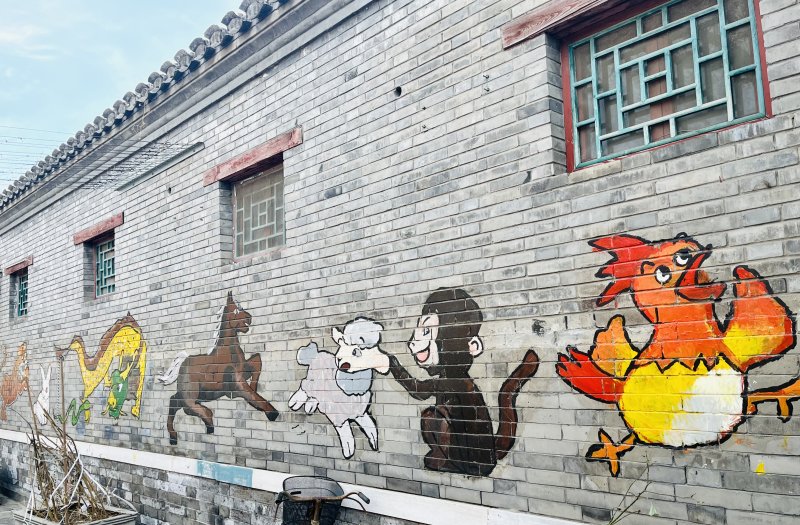
From Fayuan Temple, head west and find the north-to-south Lanman Hutong 烂漫胡同. Black Cat Brewing Company fulfills the requirement that every hutong in Beijing must maintain at least one craft beer purveyor, while the excellent Oonagh Coffee & Bar is the perfect spot for a mid-walk rest and refreshments.
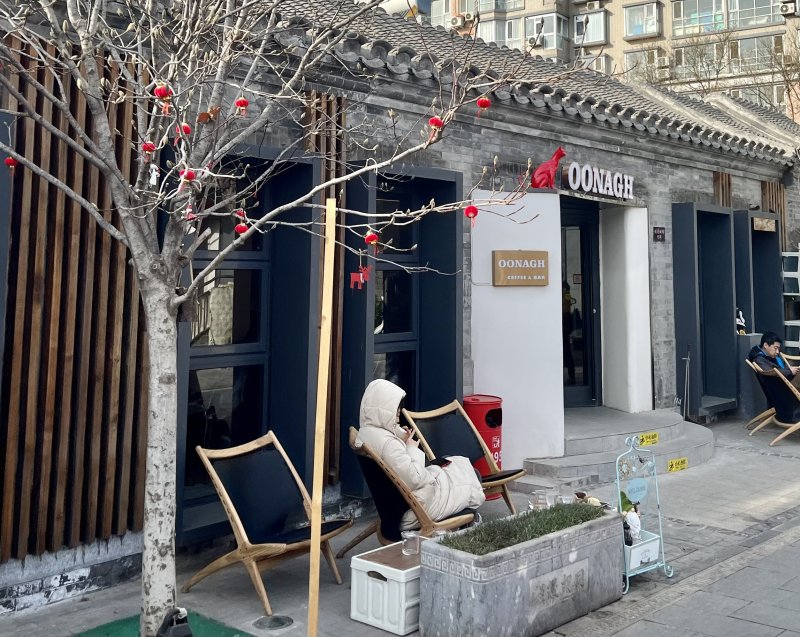
Recently refurbished, this picturesque alleyway is a photographer’s delight with streetside cartoons, a poetic homage to pigeons, and the historic Hunan Native Place Hall. In fact, the entire neighborhood is famous for the density of Native Place halls, which served as hostels, business centers, recreation venues, and meeting places for sojourners to the dynastic capital. One of the first things a traveler from the provinces would do when visiting Beijing would be to find the Hall or Lodge associated with his home province or city and catch up on the news and gossip while connecting with his homies based in the capital.
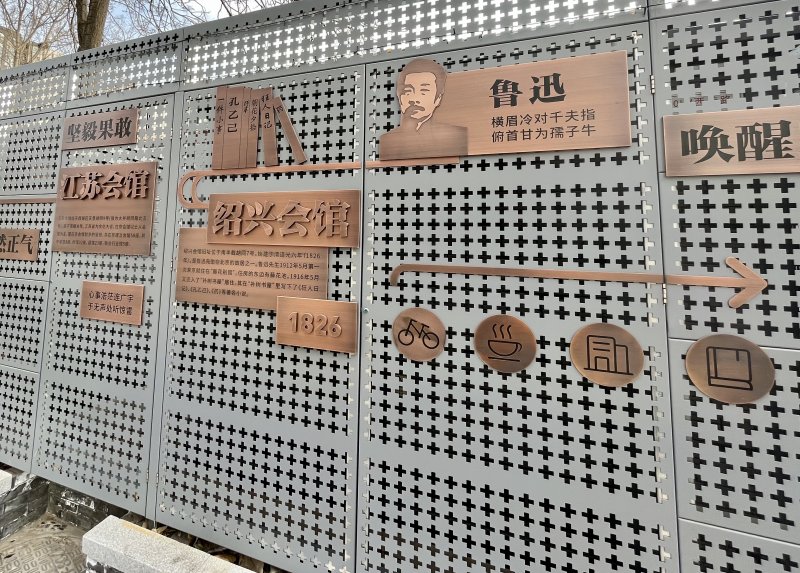
At the northern end of the Lanman Hutong, turn right on Lianhua Hutong. You can find a small exhibit featuring many of the Native Place and other halls in this part of Beijing as well as a few of the famous faces associated with them.
The former Liuyang Native Place Hall, on the corner of Lianhua Hutong and Caishikou Avenue, was the birthplace of Tan Sitong 谭嗣同 (1865-1898), one of the figures in Li Ao’s novel set at Fayuan Temple. Tan’s family was from Liuyang in Hunan Province, but his father was an official serving in Beijing and living at the Liuyang Hall when his son was born.

Ironically, Tan would leave this world very close to where he entered it. For his role in the thwarted reforms of 1898, the iconoclastic young scholar was beheaded at the Caishikou Execution Grounds a few hundred meters north on Caishikou Avenue, (not far from the current Metro Stop). Caishikou served as one of the main sites for public executions in the Qing Dynasty. The condemned were beheaded or, for more heinous crimes, killed by slow slicing under the ghoulish gaze of passers-by and the morbidly curious.

Cross over the enormous Caishikou intersection and head east down busy Luomashi Avenue 骡马市大街. On the north side of the street, you will come to the junction of Weiran Hutong 魏染胡同. Head north, and at Number 30, you will see the former site of the Jingbao《京报》(“Beijing News”) Newspaper, founded in 1918 by journalist and activist Shao Piping 邵飘萍 (1884-1926). For eight years, Shao published essays and articles on social issues and foreign affairs while openly calling for political reform. The warlord government in Beijing failed to appreciate Shao’s activist journalism, and he was killed in 1926. Today, the newspaper offices are open to the public and house a museum commemorating Shao Piping’s life and work.

Finally, walk north along Weiran Hutong for about 10 minutes until you reach the western end of Liulichang. This popular area was named for the colored glazed palace roof tiles that, according to the legends, were manufactured here in the Ming Dynasty. By the 17th century, Liulichang had transformed, attracting scholars, artists, officials, and literati looking for books, brushes, antiques, and the other niceties that filled their studios. Today, the street has been commercialized but is still a nice place to wander and browse some of the city’s unique cultural shops and galleries.
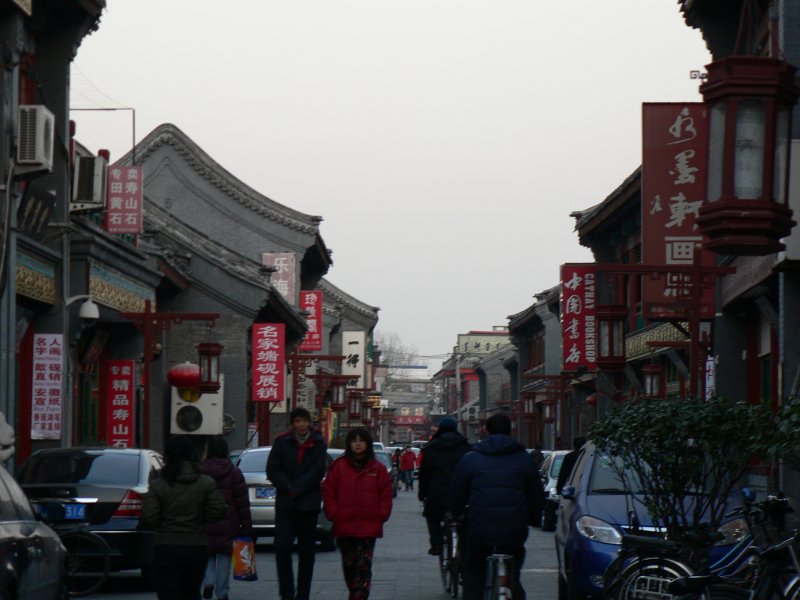
About the Author
Jeremiah Jenne earned his Ph.D. in Chinese history from the University of California, Davis, and taught Late Imperial and Modern China for over 15 years. He has lived in Beijing for nearly two decades and is the proprietor of Beijing by Foot, organizing history education programs and walking tours of the city including deeper dives into the route and sites described here.
READ: Story of the 'Jing: A History of Commerce at Longfusi
Images: The author, Wikicommons, Uni You

